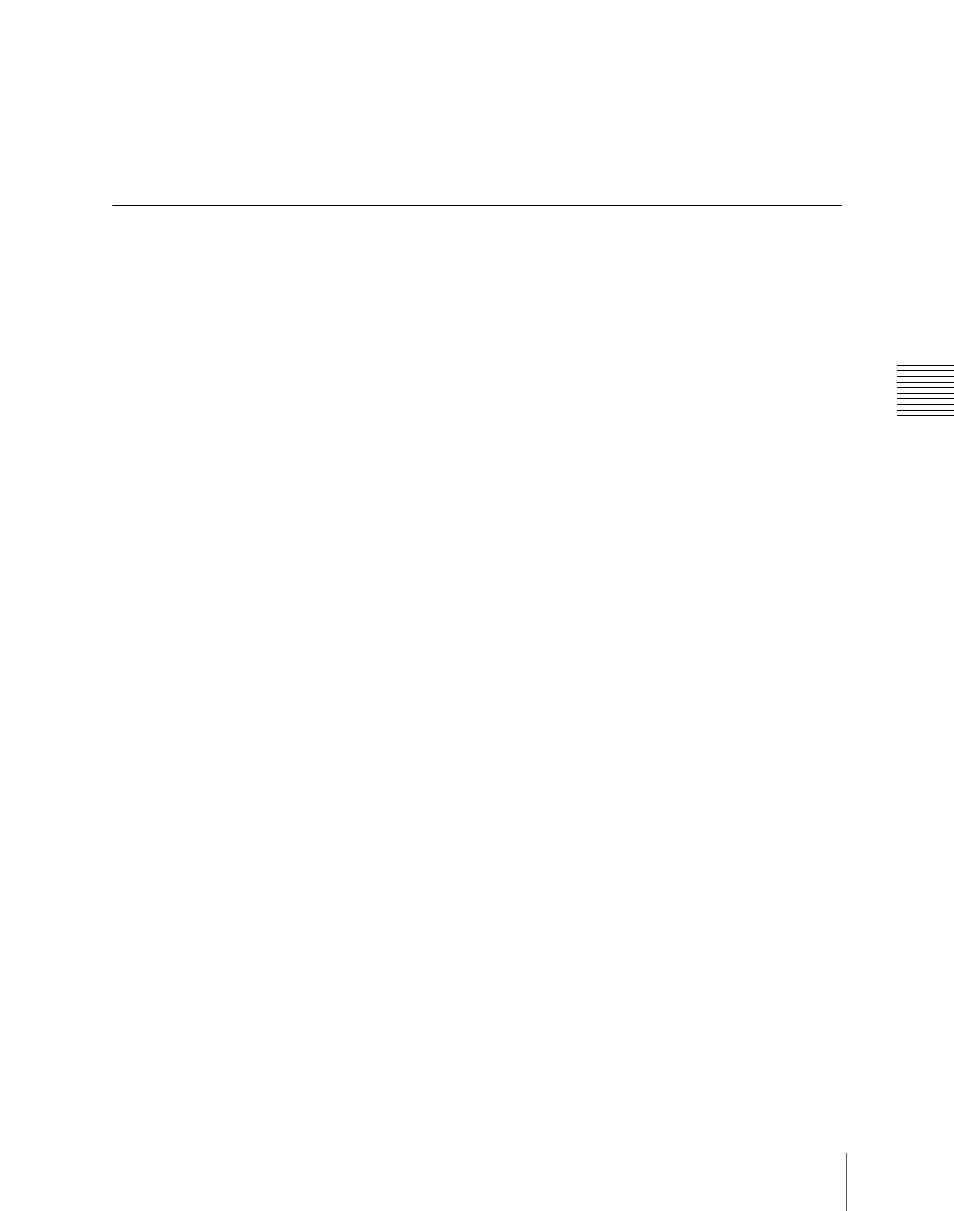Dme wipe pattern variation and modifiers – Sony Multi Interface Shoe Adapter User Manual
Page 239

239
Overview
Chap
Signals forming part of the background for a DME wipe
For a two-channel mode brick, frame in-out, and so on, the part of the pattern
shown in gray
is filled with the signal selected on the DME
external video bus.
DME Wipe Pattern Variation and Modifiers
You can modify the selected DME wipe pattern in the same way as an ordinary
wipe pattern, as follows.
For the setting operations, see “Setting DME Wipe Modifiers” (page 244).
Direction:
You can set the DME wipe direction to normal, reverse, or
alternating normal/reverse
except for a key transition,
which is always in normal/reverse mode. However, a key transition can
only be specified when the following patterns are selected, and when other
patterns are selected, this is fixed, as normal/reverse.
Patterns:
1204, 1207, 1221 to 1224
Edge:
You can apply a border or soft border
In the case of those user programmable DME patterns for keys in which an
edge has already been applied to the effect, the behavior is as follows.
• When the DME wipe edge setting is on, only part of the edge applied in
the effect is enabled, and that portion can be adjusted
• When the DME wipe edge setting is off, the edge applied in the effect is
enabled as is.
Positioner:
You can move the DME wipe pattern or center of the effect to an
arbitrary position. Using the position select function, you can also
instantaneously move the pattern.
• 1031
When this pattern number is selected, with the progress of the transition
the pattern center automatically moves initially from the set position
toward the center of the screen
. In other words, the effect
obtained is the same as in a normal wipe with the positioner set to
“AUTO CENTER”.
• 1201 to 1208, 1221 to 1224, 1251
When these pattern numbers are selected, you can set the pattern position
when the first transition completes.
• 2651, 2652
When these pattern numbers are selected, you can move the pattern for
each channel, or with values relative to the current position the two
channels simultaneously.
• 2801 to 2804, 2811 to 2814
When the these pattern numbers are selected, you can set the vertical
position as the brick slides in.
